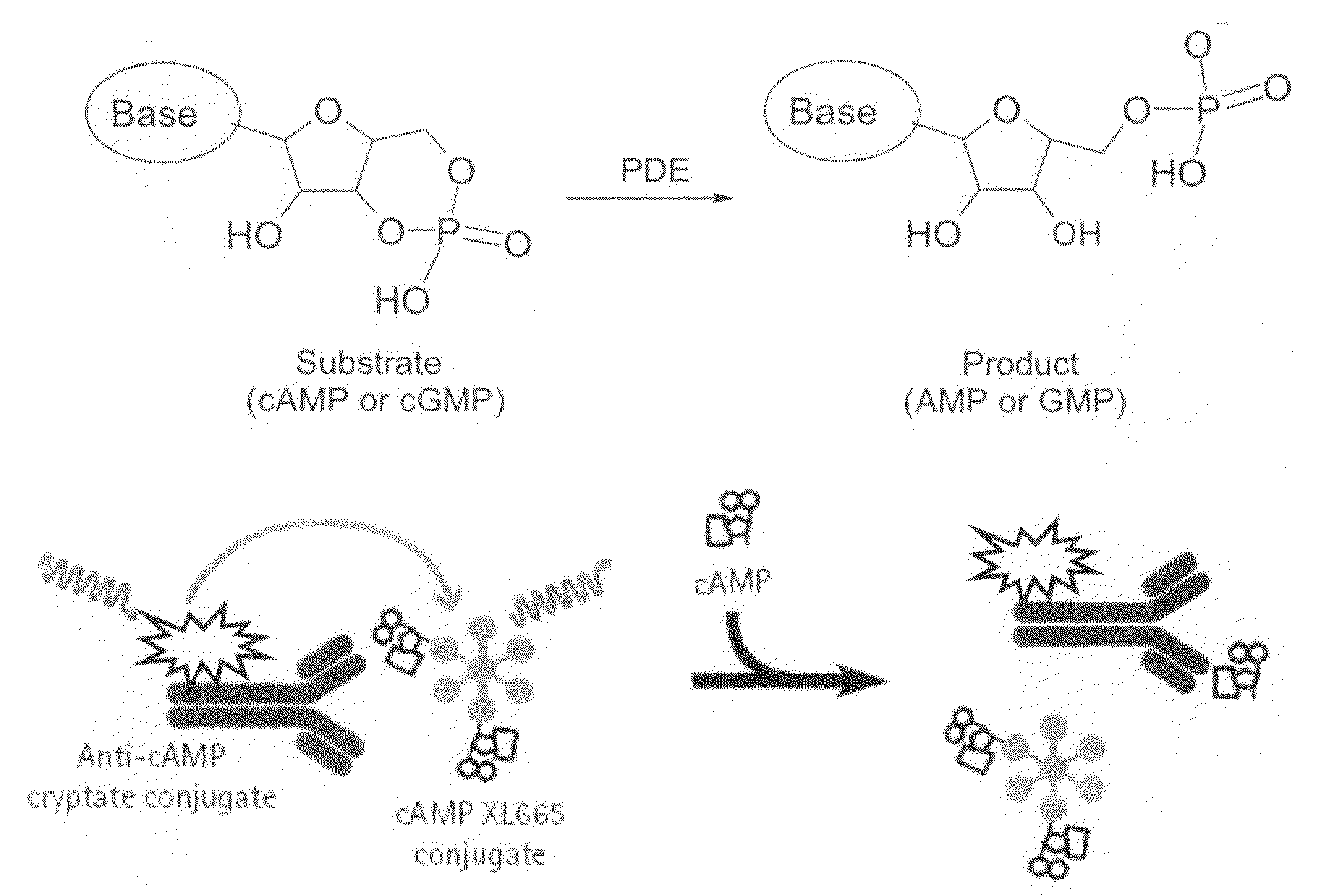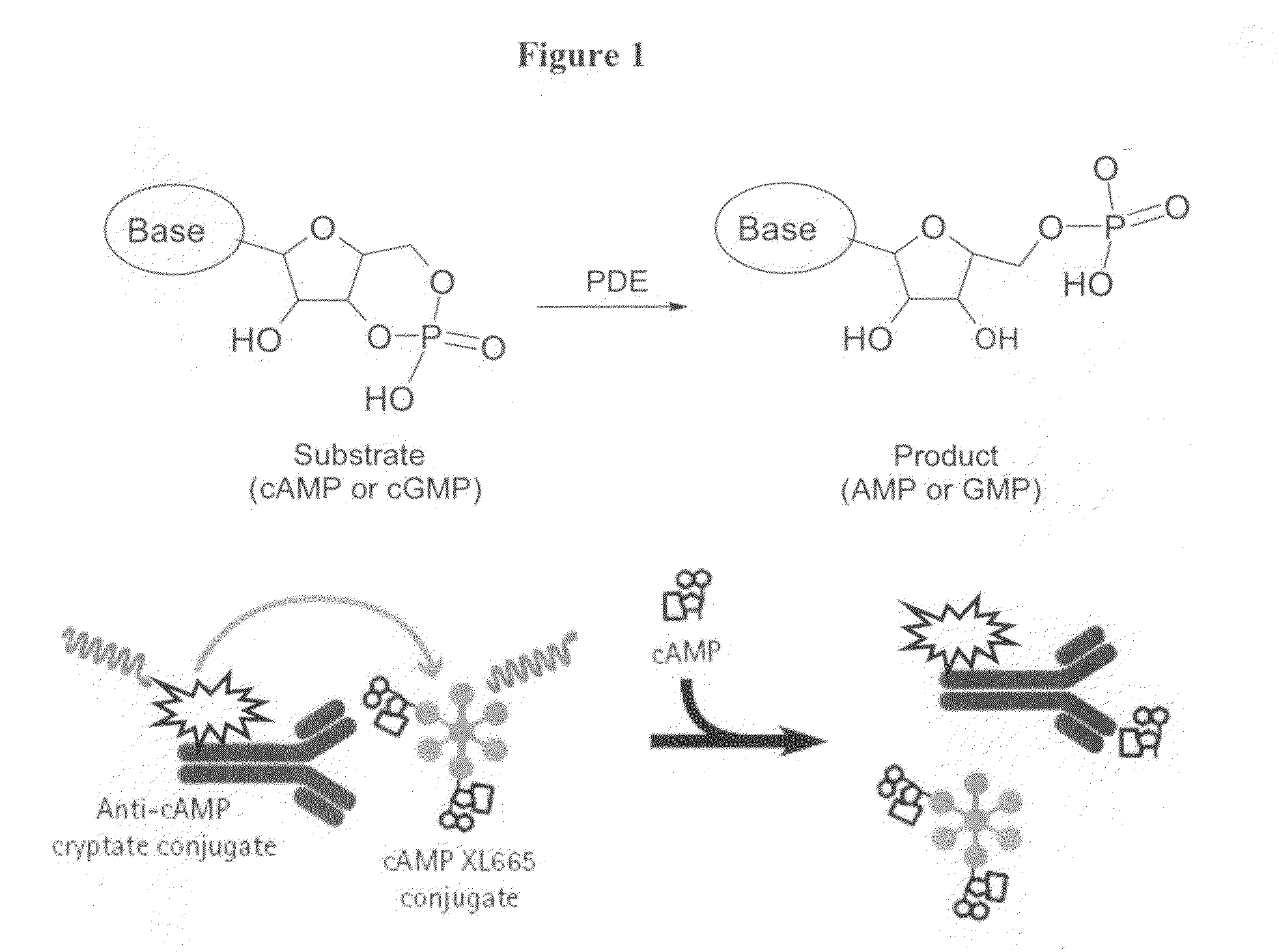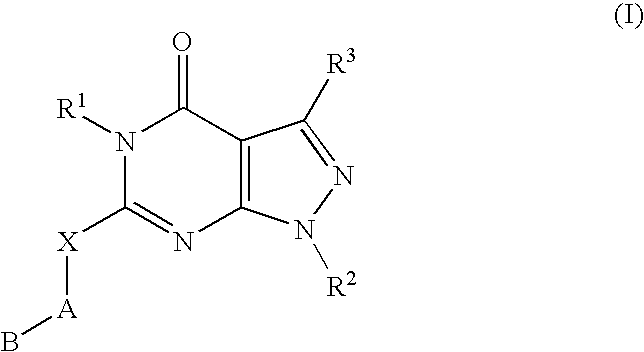Novel compounds useful for the treatment of degenerative & inflamatory diseases
a technology of inflamatory diseases and compounds, applied in the field of new compounds useful for the treatment of degenerative & inflamatory diseases, can solve the problems of cartilage degradation, pain and loss of mobility, and limited ability of cartilage tissue to regenerate after such insults
- Summary
- Abstract
- Description
- Claims
- Application Information
AI Technical Summary
Benefits of technology
Problems solved by technology
Method used
Image
Examples
examples
1. Synthetic Preparation of Compounds of the Invention
[0425]The compounds of this invention can be prepared from readily available starting materials using the following general methods and procedures. It will be appreciated that where typical or preferred process conditions (i.e., reaction temperatures, times, mole ratios of reactants, solvents, pressures, etc.) are given; however, other process conditions can also be used unless otherwise stated. Optimum reaction conditions may vary with the particular reactants or solvent used, but such conditions can be determined by one skilled in the art by routine optimization procedures.
[0426]Additionally, as will be apparent to those skilled in the art, conventional protecting groups may be necessary to prevent certain functional groups from undergoing undesired reactions. The choice of a suitable protecting group for a particular functional group as well as suitable conditions for protection and deprotection are well known in the art. For ...
specific examples
Example 1
N-(Benzo[d][1,3]dioxol-5-yl)-3-(1-tert-butyl-3-methyl-4-oxo-4,5-dihydro-1H-pyrazolo[3,4-d]pyrimidin-6-yl)azetidine-1-carboxamide
[0453]
[0454]A suspension of Description 3 (60 mg, 0.21 mmol), morpholinomethyl PS resin (4.2 mmol / g, 100 mg) and 3,4-(methylenedioxy)phenyl isocyanate (39 mg) in DCM (4 mL) was shaken at room temperature for 16 h. Tris-(2-aminoethyl)-amine PS (100 mg) and methyl isocyanate PS (100 mg) scavenger resins were added and the mixture shaken for 5 h. The reaction was diluted with MeOH (˜4 mL), the resins removed by filtration and the filtrate evaporated. The crude product was purified by gradient column chromatography, eluting with 2-5% MeOH in DCM to give the title product as a white solid (43 mg, 51%). 1H NMR (400 MHz, d6-DMSO) δ 12.08 (1H, br s), 8.48 (1H, s), 7.22 (1H, s), 6.90 (1H, d, J=8 Hz), 6.82 (1H, d, J=8 Hz), 5.99 (2H, s), 4.23 (4H, m), 3.86 (1H, m), 2.37 (3H, s), 1.71 (9H, s). MS (MH+, m / z) 425.
example 2
3-(1-Cyclohexyl-4-oxo-4,5-dihydro-1H-pyrazolo[3,4-d]pyrimidin-6-yl)-N-(4-(4-isopropylpiperazin-1-yl)phenyl)azetidine-1-carboxamide
[0455]
[0456]4-(4-Isopropyl-piperazin-1-yl)-phenylamine (Description 15, 53 mg, 0.24 mmol) was added to a solution of carbonyl diimidazole (39 mg, 0.24 mmol) in DCM (2 mL). The solution was stirred for 1 h then triethylamine (68 μL, 0.48 mmol) was added followed by Description 4 (75 mg, 0.24 mmol). The mixture was stirred for 16 h then diluted with DCM (2 mL) and washed with water (4 mL). The solvents were removed in vacuo and the residue was purified by gradient column chromatography eluting with 5-10% MeOH in DCM to give the title compound (37 mg, 29%). 1H NMR (400 MHz, d6-DMSO): δ 12.15 (1H, s), 8.34 (1H, s), 8.05 (1H, s), 7.36 (2H, d, J=8), 6.86 (2H, d, J=8), 4.59 (1H, m), 4.24 (4H, m), 3.93 (1H, m), 3.10-3.00 (4H, m), 2.75-2.70 (1H, m), 2.65-2.60 (4H, m), 1.96-1.85 (6H, m), 1.71 (1H, m), 1.48-1.41 (2H, m), 1.28 (1H, m), 1.02 (6H, d, J=8). MS (MH+, m / z...
PUM
| Property | Measurement | Unit |
|---|---|---|
| total volume | aaaaa | aaaaa |
| concentration | aaaaa | aaaaa |
| temperature | aaaaa | aaaaa |
Abstract
Description
Claims
Application Information
 Login to View More
Login to View More - R&D
- Intellectual Property
- Life Sciences
- Materials
- Tech Scout
- Unparalleled Data Quality
- Higher Quality Content
- 60% Fewer Hallucinations
Browse by: Latest US Patents, China's latest patents, Technical Efficacy Thesaurus, Application Domain, Technology Topic, Popular Technical Reports.
© 2025 PatSnap. All rights reserved.Legal|Privacy policy|Modern Slavery Act Transparency Statement|Sitemap|About US| Contact US: help@patsnap.com



